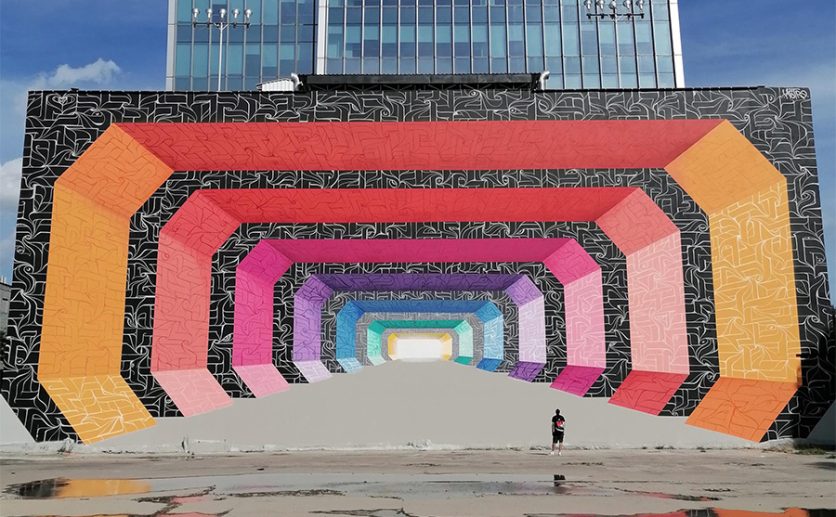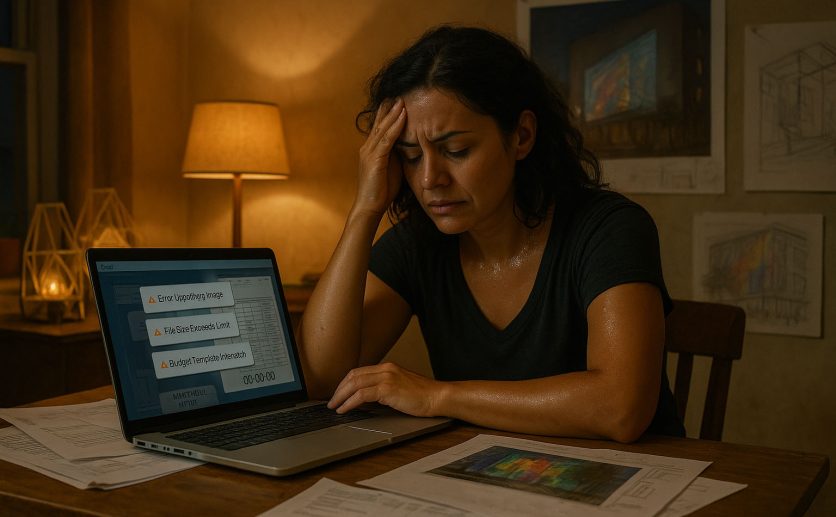Monochronicle’s Exploration of the Aesthetic Delimitation of Street Art
Mural art and site-specific installations have become popular in recent years and are widely commissioned around the world. However, there is no particular categorization of street art determined due to its status as a relatively new, unique domain that operates outside the conventions implicit within fine art (Danysz, 2016). Monochronicle, therefore, has created our own system of classification under which we delimit our street art categorizations in the service of aiding not only our research collection but our means of connecting our clients with a personalized style that matches their unique needs.
The purpose of this article centers around explicating our process of classification, how we arrived at this conclusion, and the functional ways it works to inform our practice. We will delimit what necessitated this process, the process of classification itself, and how it is put to functional use within the organization. Finally, the article will turn to the ways in which this system can be utilized by other organizations, the public, artists, etc. to broaden our understanding of what constitutes street art.
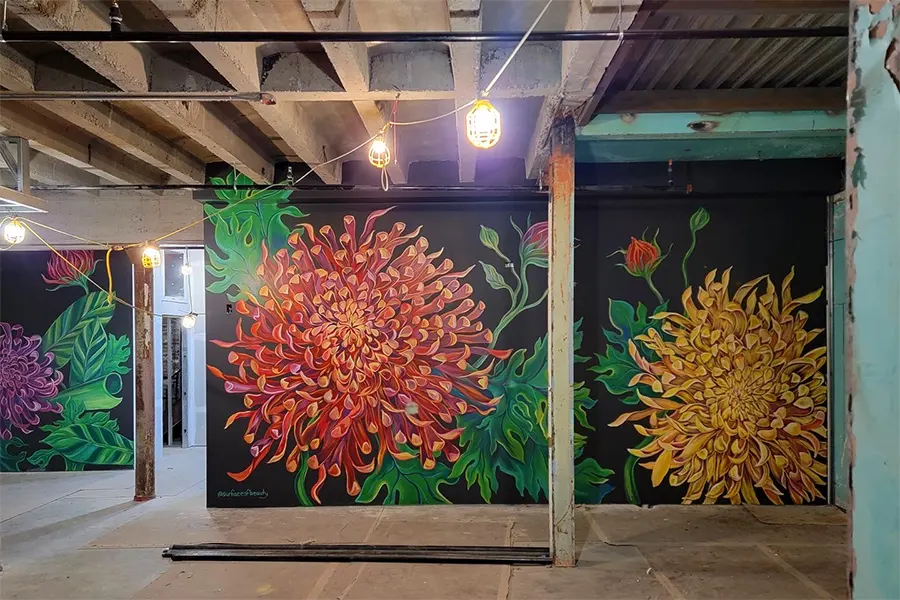
Artist Type: Mural. Genre: Realism (plant life). Medium: Acrylic paint. Artist: Surface of Beauty.
Street art and its cohort graffiti are unique in their operation outside of the conventions posed by traditional fine art and their establishments. This public art embodies universal fantasies, urban redevelopment projects, a populist aesthetic, and an open-air museum. No unified categorization of street art exists in a cohesive, universally agreed-upon form. This was brought to our attention at the outset of our data collection process, in which our tasks included categorizing various street artists under a unified aesthetic. Our categories changed dramatically from the outset of our project to its completion, as we began researching a multitude of styles of street art.
Articles proliferate the internet delimiting the “7 types of street art,” “types of murals one should know,” “what qualifies as street art,” etc (Kamp, 2021) (Clark, 2020). These all exist as illuminating reads, however, were not as unified or holistic as we would have liked. We came to understand that an enormous variety of media may be used, including clay, wax, stone, metal, fabric, glass, wood, plaster, rubber, and “found” objects. These materials then, may be carved, molded, modeled, cast, wrought, welded, sewn, assembled, or otherwise shaped and combined. In other words, traditional murals and graffiti are just the tip of the iceberg. Our task then, became creating a succinct categorization system for such multiplicitous materials and such a wide variety of artists.
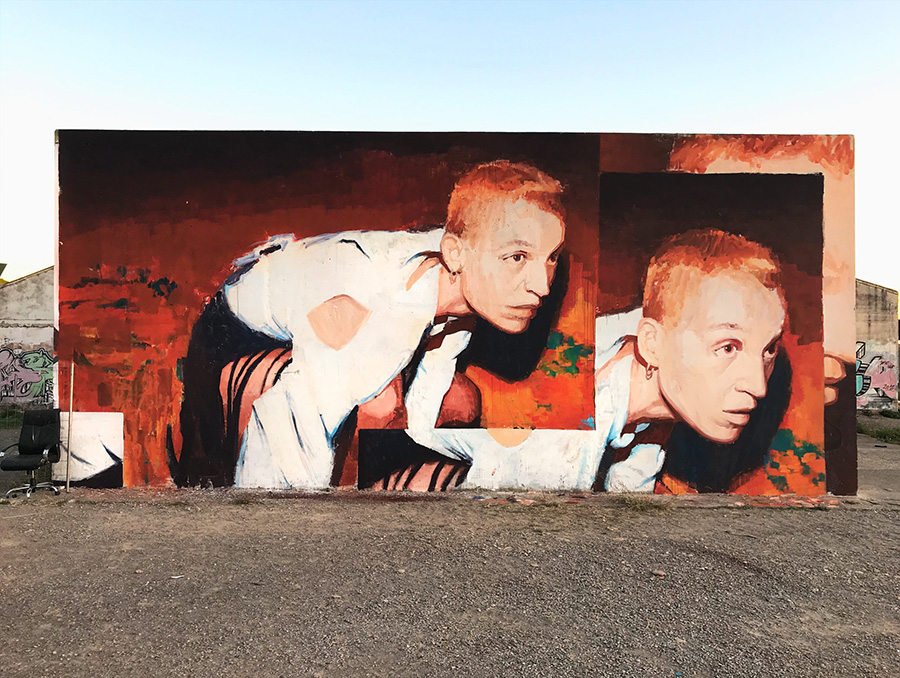
Artist Type: Mural. Genre: Figurative. Medium: Acrylic paint. Artist: Cesar Goce.
Categorization of Street Art: Methodology
Our starting point was the street artists themselves. After months of researching internationally renowned street artists, we were exposed to a diverse range of murals, graffiti, installations, etc. We devised a series of dropdown menus when assigning an artist to a particular category, beginning simply with the type of artwork. This includes: mural, mosaic, installation, sculpture, light, or multimedia. This initial categorization delimits the form the work takes. Our next step was to assign the form to a genre: abstract, figurative, lettering, or mixed. These genres, which can be initially mistaken for style, explicate the form of the content, be it abstract (non-representational, symbolic, amorphous), figurative (representational, derived from life- especially references to the human figure), lettering (mostly comprising graffiti and lettering), and mixed (combination of the forms above). We then delimit the style of the work: realism, realism (plant life), social realism, photorealism, trompe l’oiel (3D), geometrical 3D, graphic (shapes), graphic (text), stencil, poster, chalk, mosaic, LED, video projection, sculpture, site-specific, interactive, multimedia, mixed styles, black & white, paste-up, poster, and sticker. Following the style, we delimit the medium: paint, mosaic, ceramic, metal, light, video, mixed media, and others. Finally, we categorize the artist’s intentions: historical, political/social, environmental, reimagining urban space, surprise and delight, community engagement, and others. The identifying information attached to the work includes the name of the artist/crew and the date/location of the work (Graf, 2019, p. 3). These signifiers aid our process of classification as well as the feasibility of clients finding their preferred style. Upon wanting something “colorful,” a patron may be redirected to those styles and artists who fit the criteria, eventually narrowing it down to the particular artist they desire.
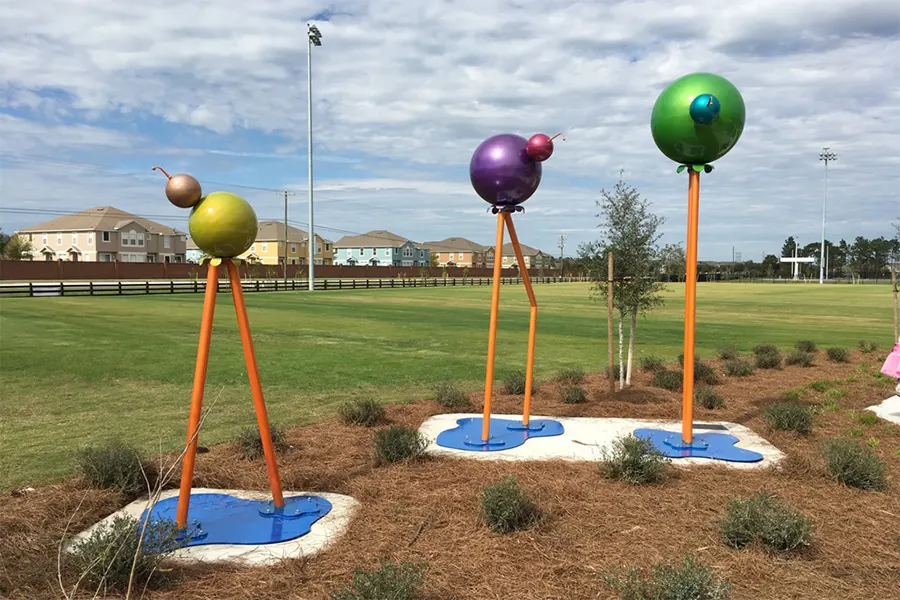
Artist Type: Sculpture, Installation. Genre: Abstract, Mixed. Medium: Metal, Other. Artist: Jenn Garrett.
Our Findings
When submitting the artist form artists were self-identifying their genre, style, and intentions. Most artists tend to select all kinds of media and styles, as well as dominate messaging of their work, giving no preference to one. Most likely, they feel like checking all the points would increase their chances for an art commission and/or believe they can execute the task having little to no experience. As a result, we decided to eliminate questions about the style of the artist’s work and intentions due to their irrelevance.
Although the lengthy process of classification has solidified, it is perpetually improving and evolving. Using our expertise on street artists and their work, coupled with research opportunities, we have established our unique classification system consisting of three main categories of distinctiveness: type of artwork, genre, and medium. Moreover, we have developed a quiz that allows our customers better understand their styles and goals. Try it here and see immediate results without the need for registration.
Street art is a rather elusive category to define. For example, the cover image is a mural painted by Astro which can be categorized as calligraphy, abstract, and 3D. However, our system has proven useful in pinning down the most important aspects of the work which can then be communicated to our audience. Based on our research, this system emerges as a building block upon which the question of what defines street art can be broadened and expanded, allowing for a dialectical understanding. We encourage you to engage in our system of classification, share your experiences and practices, and keep exploring the vast array of constantly evolving work that constitutes street art. Contact us with your comments, suggestions, or independent research.
References:
- Magda Danysz. 2016: A Street Art Anthology. Spain: Promopress.
- Ann Marie Graf. 2019. “Facets of Graffiti Art and Street Art Documentation Online: A Domain and Content Analysis.” Theses and Dissertations: University of Wisconsin-Milwaukee.
- Joanna D. Clark. 2020. “7 Different Types of Street Art.” Tauranga Street Art Festival, March 18, 2020. Available at https://taurangastreetartfestival.nz/7-different-types-of-street-art/.
- Justin Kamp. 2021. “What Qualifies as Street Art?” Artsy. Jan 11, 2021. Available at: https://www.artsy.net/article/artsy-editorial-qualifies-street-art.
